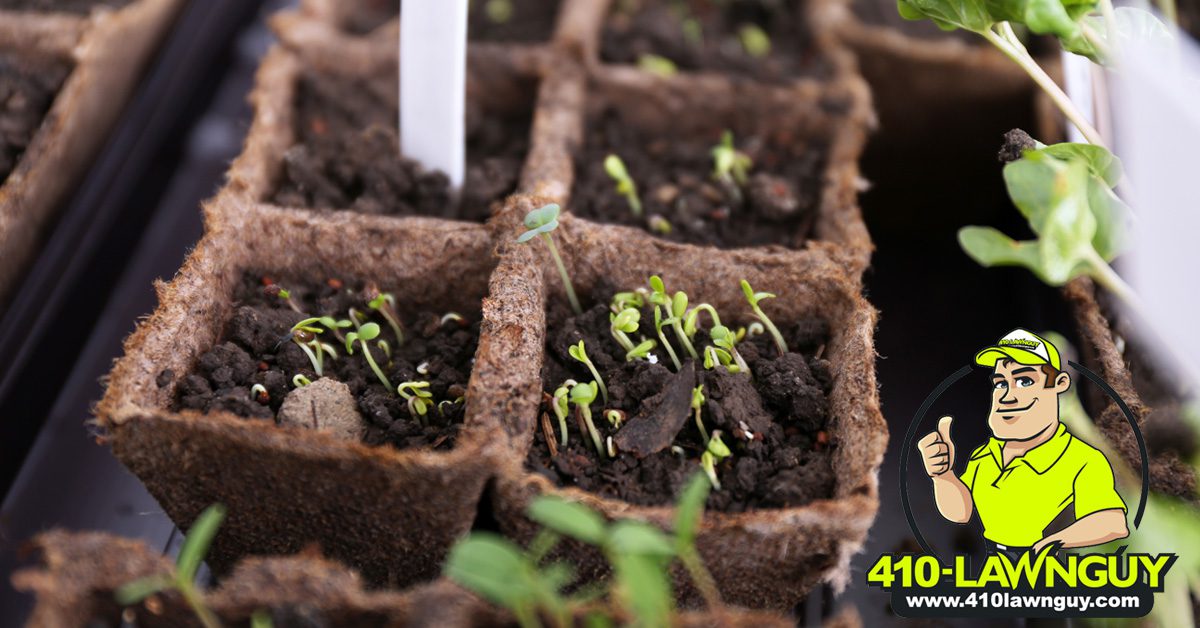 Tips to Plan For Your 2022 Vegetable Garden
Tips to Plan For Your 2022 Vegetable Garden
Start planting indoors to prepare for Spring. Planting your own vegetables and feeding them to your family is a pretty rewarding experience. More and more people are returning to this practice in their backyards.
In fact, vegetable gardening hasn’t gained this much popularity since the Victory Gardens of the early and mid-1900s. Leave it to a global pandemic to push people to be more self-sufficient and frugal. Whether you’re looking for a stress-relieving hobby or you want to start saving money on groceries, growing your own vegetables is an accomplishment that will make you proud of your efforts.
The great thing about gardening is you can do it year-round. Even in the winter months near the D.C. area, when we can’t plant outdoors, we can be indoors getting our seeds started (as we stare out the window, wringing our hands, waiting for spring…). Since we have a shorter growing season than warmer climates, starting seeds indoors is a wise choice to give plants a head start.
How to Plant Indoors to Prepare for Spring
Do your research on what seeds you’d like to plant. There is more variety when it comes to seeds as opposed to starter plants offered at most stores. Be sure to read the directions on the seed packet to know what is best for that particular plant.
Figure out what space you can use in your home. Seedlings need 6-8 hours of sunlight, so this fact alone will help you determine what is possible. Home improvement and gardening stores sell starter kits, but you can be as frugal as you’d like.
You can use something as simple as an egg carton with holes poked in the bottom, so you don’t have to break the bank.
As long as each seed has a clean container with a hole in the bottom for drainage, good soil, and is in a sunny spot, you’re on the right path.
Planting Indoors Tip:
Be sure to turn your containers as your seedlings start to grow. Plants naturally bend towards the light, and you want to be sure both sides of the plant feel the love.
When to Start Planting Indoors for Your Spring Garden
You can start planting annual vegetables outdoors after the threat of frost has passed. Yes, this can be tricky to predict, but a good rule of thumb is mid-to-late May for those of us here on the east coast.
To prepare for this outdoor planting, you’ll want to give your seeds at least six weeks of growth time to ensure they are big enough to transplant into the ground. Starting your seeds indoors around the end of March is an excellent timeframe to begin.
Some seeds require more extended germination periods, and some require less, so be sure to do your research as you plant.
Planting Indoors Tip:
Be sure to carefully label each container with the vegetable name and date of planting to avoid confusion.
What Vegetables are Best to Start Indoors?
You can start nearly any vegetable indoors, but some vegetables genuinely don’t need the extra time, effort, and space indoors. Save your space for the plants that can benefit from getting a head start indoors like:
- Broccoli
- Cauliflower
- Peppers
- Tomatoes
Squash, cucumbers, and lettuce tend to do well when planted directly outdoors in the spring, so they don’t need to get the indoor boost. Root crops like beets, potatoes, turnips, and radishes do better when planted directly into the soil, so your best bet is not to start these indoors.
Planting Indoors Tip:
Plan on some of your seedlings not surviving. It’s all part of gardening. Take this into consideration while planning what seeds to plant. Choose a variety of things you and your family like to eat.
Planting seeds indoors to prepare for spring is something you can start right now, as you sit inside counting down the days until spring arrives. It makes for a more fun winter and is a project your whole family can be a part of, and literally enjoy the fruits of your labor together this summer.
Here at 410 Lawn Guy, we look forward to caring for your lawn when the grass emerges from under the snow. Until then, try your hand at gardening, and tell us how it goes!

